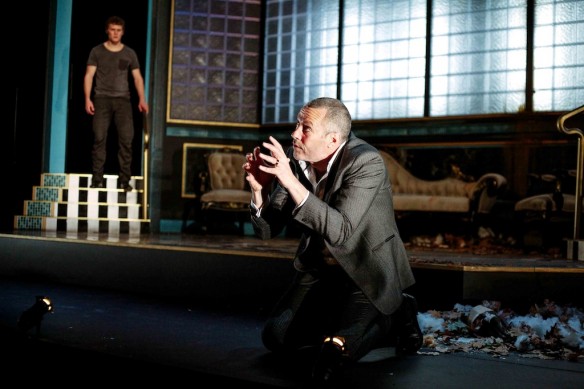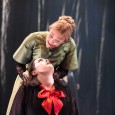You could be forgiven for thinking you were in an Amphitheatre on a cliff somewhere in the Mediterranean, not on Sydney Harbour watching a rare performance of the Jean Racine classic Phedre.
The elegant but sharp Ted Hughes translation of the Racine version of the Phaedra myth, first performed in 1677, is the perfect foundation for this Bell Shakespeare production.
Phedre is an ancient tale of lust and betrayal, illicit love and heroic acts, that ends badly for everyone. Theseus has been missing for six months, believed to be dead. There are rumours though that he may return from Hades (hell) as he has done once before.
In the meantime his queen Phedre (also known as Phaedra) is wasting away from some unknown disease. In a moment of weakness she confides in her old nurse Oenone that she is in love with her stepson, the famously misogynist Hippolytus. The haughty queen writhes in shame as she rails against the gods for the strange passions they have inflicted on the women of her family – chief among them her mother Pasiphae whose love for a white bull created the Minotaur, trapped in a labyrinth under Thebes. Theseus won reknown when he slew the Minotaur with the help of Phedre’s sister Ariadne.
Irony upon irony but this is ancient Greece where nothing was mere coincidence or accident.
Director Peter Evans captures the nuances of the myth but imbues it with modern context to make this Bell Shakespeare production both an invocation of the ancient gods and a modern day psychological expose of illicit love. But whether on the ancient altars or on the pychiatrist’s couch Phedre’s illicit lust for her stepson dooms them both.
Catherine McClements is hypnotic as she struts and stumbles across the stage on impossibly high stilettos writhing in the agony of unfulfilled longing and sheer self-disgust.
Her enormous emotions are as uncontrollable as the horses that eventually lead Hippolytus to his death while her disgust at her “monstrous” love is as frightening and repulsive as the creature that rises from the sea to vanquish Hippolytus.
Marco Chiappi is authoritative as Theseus, the mythic hero who defeats Hades only to be completely undone by the emotional turbulence that has shattered his home. Chiappi plays on this contrast to create a character that is at once forceful and decisive but also completely vulnerable, gullible and lost.
Edmund Lambke-Hogan does a good job presenting Hippolytus as the naïve and rather touchingly innocent boy in love with is very sweet and uncomplicated as Aricia(Abby Earl), the rightful heir to Athens, and prisoner of Theseus. He is less convincing in portraying the heroic man of legend.
More complex is Oenone played with delicate precision by Julie Forsyth. Her character is a strange mix displaying both the maternal protective love and doting nature of Juliet’s nurse and the brutal manipulative ruthlessness of Iago. Phedre leans on her but finally blames her for leading her to evil.
The Malthouse Theatre intimate set conveys the moral decadence beneath the decaying luxury as well as the disintegration under the surface – the rottenness at the core.
In the end, we are reminded of Shakespeare as well as Euripedes and Seneca, Aeschylus and Ovid. Not bad for a 21st century production that with a few special effects would play well on the big screen in 3D.
I would love to see this production in that Amphitheatre on that cliff.
Right now you can catch it at the Playhouse Theatre at the Sydney Opera House until June 29. More information and booking details on the Bell Shakespeare website.







